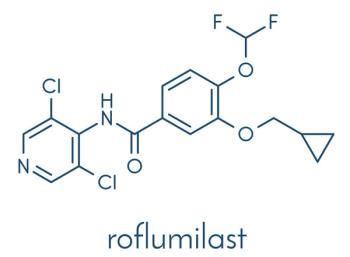
Verrucous Cutaneous Sarcoidosis
For 4 years, a 50-year-old man of African origin had flesh- colored, annular, verrucous plaques with a waxy appearance on his face, right earlobe, and scalp. The patient was in good health otherwise. Physical examination showed no anomalies. A complete blood cell count was normal, as was the biochemical profile. A chest radiograph was also normal.
For 4 years, a 50-year-old man of African origin had flesh- colored, annular, verrucous plaques with a waxy appearance on his face, right earlobe, and scalp. The patient was in good health otherwise. Physical examination showed no anomalies. A complete blood cell count was normal, as was the biochemical profile. A chest radiograph was also normal.
A punch biopsy from the lesion on the forehead revealed a characteristic finding of sarcoidosis--the "naked tubercle" composed of islands of epithelioid cells intermingled with histiocytes without evidence of inflammation along the periphery. Staining of the biopsy specimen showed no mycobacteria or fungi.
The diagnosis of verrucous cutaneous sarcoidosis was made based on the clinical and histopathologic findings, write Florence Isaac, MD, of Mohammad Dossary Hospital in Saudi Arabia and Shaun Isaac, MD, of American Family & Geriatric Care in St Petersburg, Fla. The rare occurrence of exuberant verrucous lesions as the exclusive cutaneous sign of sarcoidosis has been reported only in black patients.
The patient was treated with repeated intralesional injections of triamcinolone. Some improvement in the appearance of the lesions was noted after 6 months. Systemic corticosteroids may be considered for patients with chronic or disfiguring lesions that are unresponsive to topical or intralesional therapy, even in the absence of systemic disease. Other options include methotrexate or azathioprine. Surgical intervention should be avoided because the risk of secondary hypertrophic scars as well as keloids is quite high in this patient population.
Newsletter
Enhance your clinical practice with the Patient Care newsletter, offering the latest evidence-based guidelines, diagnostic insights, and treatment strategies for primary care physicians.





















































































































































































































































































